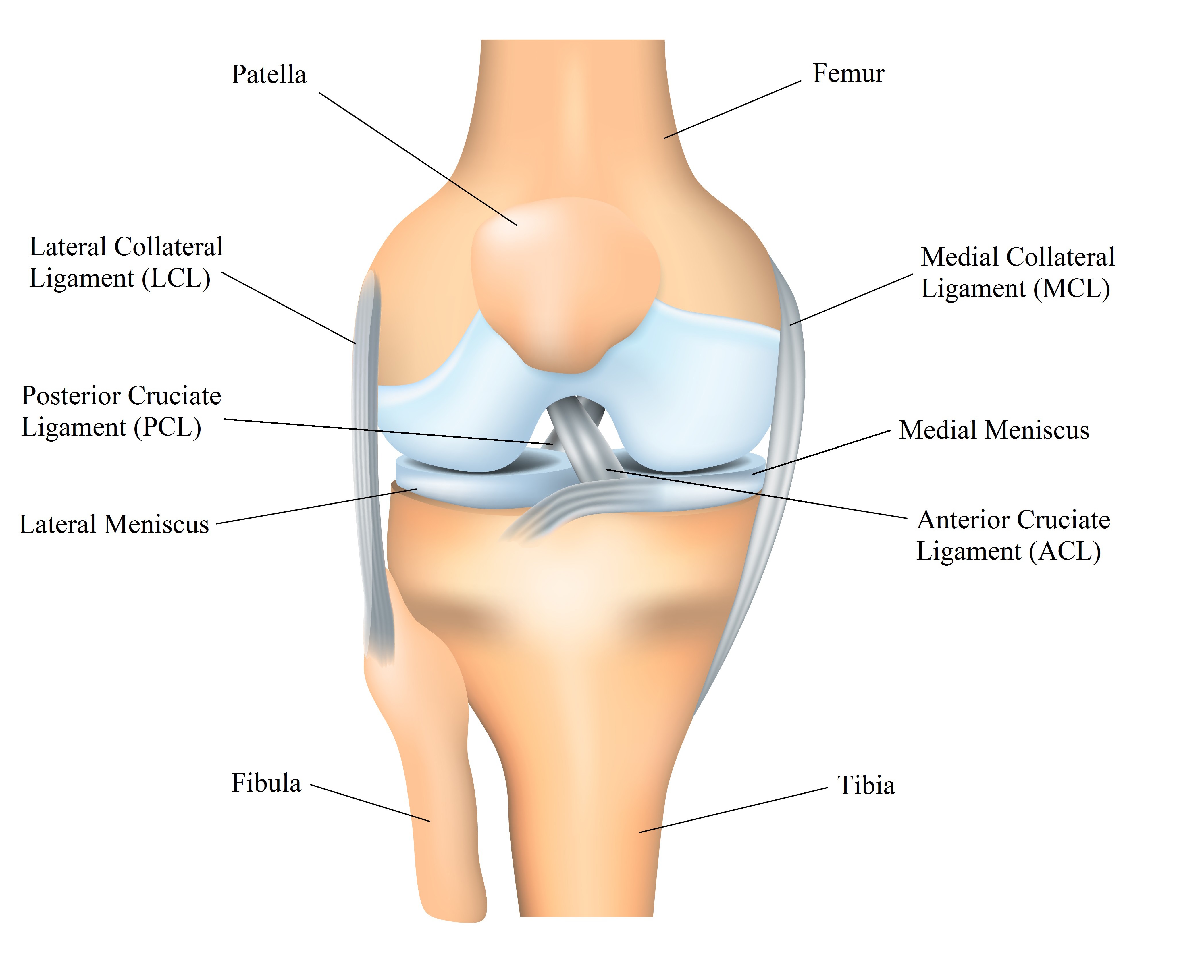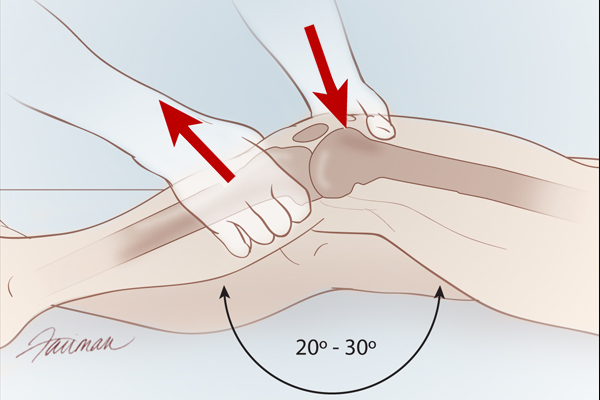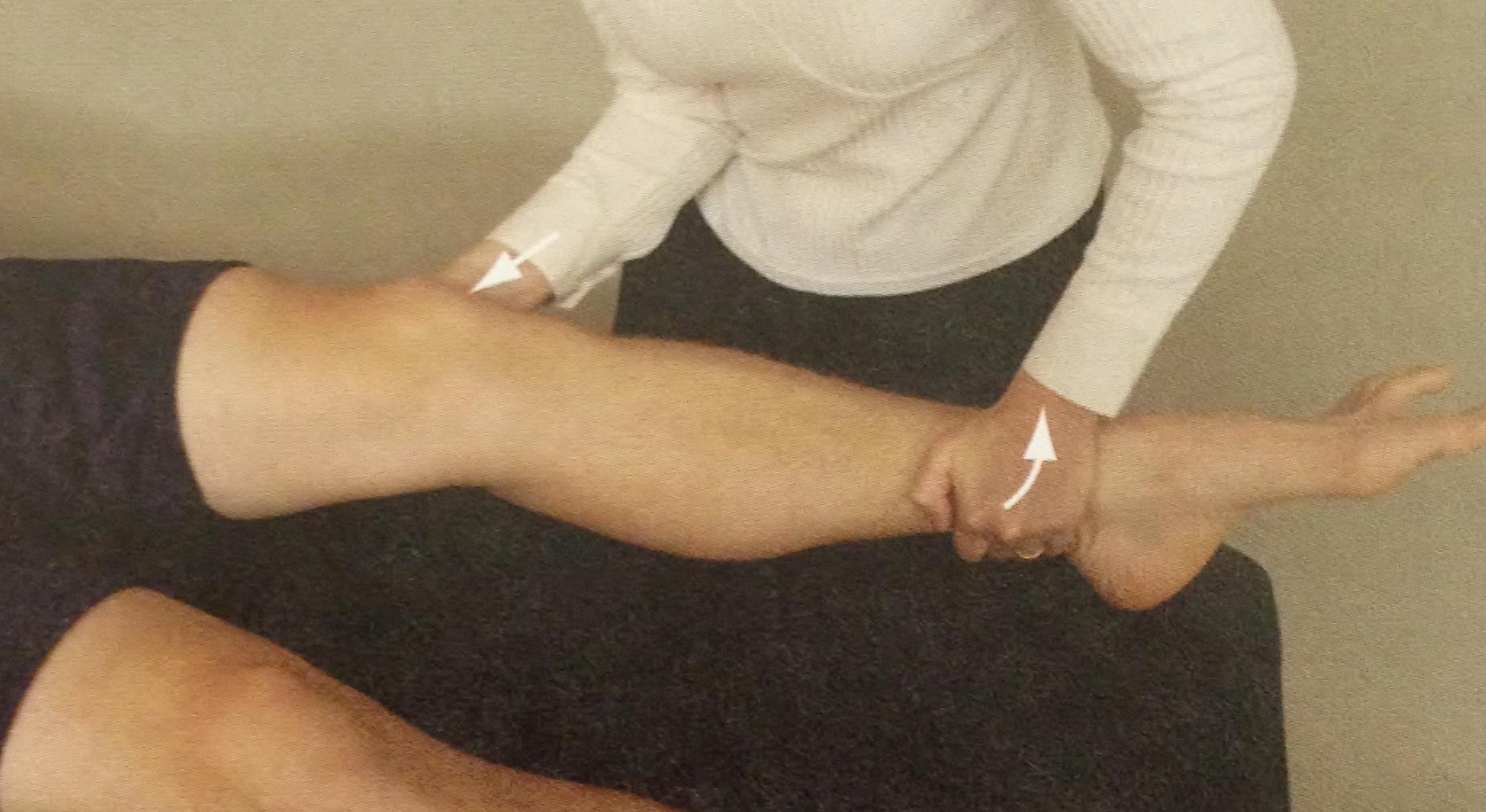OVERVIEW
Some components of the MSK exam will be covered in other exam sections (such as the neurological exam) however this section of the site (for the time being) will focus on the knee and how we can decide to image a painful knee in a patient. We can also separate the knee into commonly damaged components and the associated tests that can suggest damage those areas.

INITIAL APPROACH
When a patient presents with knee pain, in addition to a thorough history, we must also assess if there are other joints involved (specific conditions either characteristic patterns of joint involvement).
Palpate the knee looking for swelling, inflammation, or any fluid/effusion.
TESTING ACL INVOLVEMENT
The ACL (anterior cruciate ligament) is the primary stabilizer of the knee, and the tests below can assess if it has been damaged.
Anterior drawer sign: as shown in this video, the patient lies on their back with knees bent. The examiner grabs the tibia and pull anteriorly to see if there is displacement. Given the location of the ACL, if it is damaged, the tibia will be able to be displaced more anteriorly.

Lachman test: seen here in this video this is similar tot he anterior drawer sign. Anterior displacement is assessed in a slightly different manner (one hand on the femur, the other on the tibial tuberosity) with the leg bent at 20-30°. Increased anterior displacement (or a soft/squishy/undefined endpoint of anterior moment) suggests ACL injury.

TESTING MCL INVOLVMENT
Much like the ACL, the MCL (medial collateral ligament) can be tested directly for damage.
Valgus stress test: as seen in this video the integrity of the MCL can be tested directly (essentially by the motion shown below in the figure). Be sure to abduct the leg, and bend the knee at 30° to diminish the stability provided by the joint capsule to the knee.

Page Updated: 01.23.2016